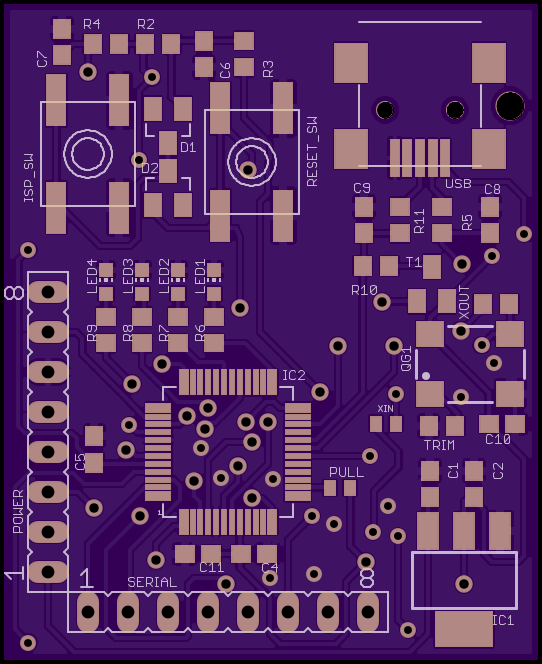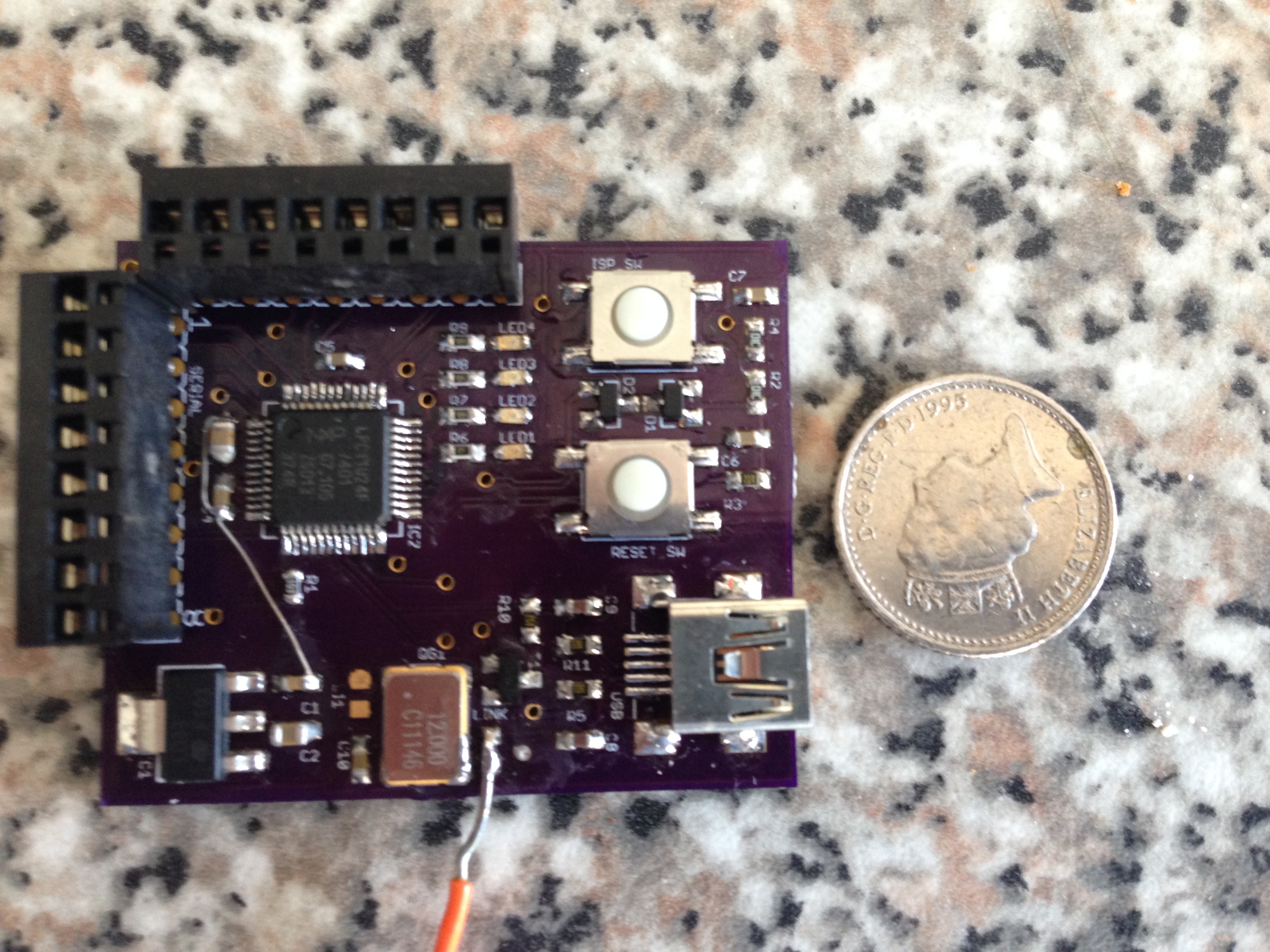Bare Metal LPC11U24
Story
After several projects using the Mbed platform I have completed a project that I need for work. Due to the fact it will be used for work, using an Mbed as the target would be too expensive. To ensure that I am comfortable designing around the hardware of the LPC and also programming the bare metal LPC11U24, I have created a very small, minimalistic board. This consists of the necessary components to program the target via USB, as well two 8 way headers and 4 debugging LED's. The 8 way headers are used mainly for GPIO as well as for powering the target.
The design
The design was mainly based around the Mbed teams design for the bare metal LPC11U24. I was kindly handed the footprint for the LPC11u24 48pin from Lerche, footprint is located at http://mbed.org/users/Lerche/notebook/lpc11u24---lqfp48-test/. This gave me the starting point for my board. I have added some of my own components, the main difference is my board is extremely small! Updates will come once my board arrives from www.oshpark.com (highly recommended for prototypes). You can upload your .brd file if using eagle, this is much easier than generating the correct gerbers.
Schematic

Board

BOM (part numbers are from Farnell)

Board Render (top)

Arrival
The board finally arrived from oshpark the quality of the PCB is fantastic. Lerche's footprint has larger pads in each corner of the LPC target. I used these to reflow the target and hold the component down before soldering the rest of the pins. Once the rest of the components were on there was one small problem! D1 needed replacing with a link resistor. Once this was complete the development board worked as expected. Hold the ISP switch down then the reset. The target will then show up as a mass storage device named CRP disabled. I deleted the firmware.bin file and replaced with my own Mbed generated bin file. This worked like a charm.
Final Board

2 comments on Bare Metal LPC11U24:
Please log in to post comments.

Great work! So, if I understand it correctly, this (your) board has exactly the same functionality as the 'official' NXP MBED board, except for the smaller pincount? And the two 8-pin headers are just because they suit your application, they have nothing to do with programming? I can imagine that the MBED debugging functionality is missing, but I don't need that anyway.